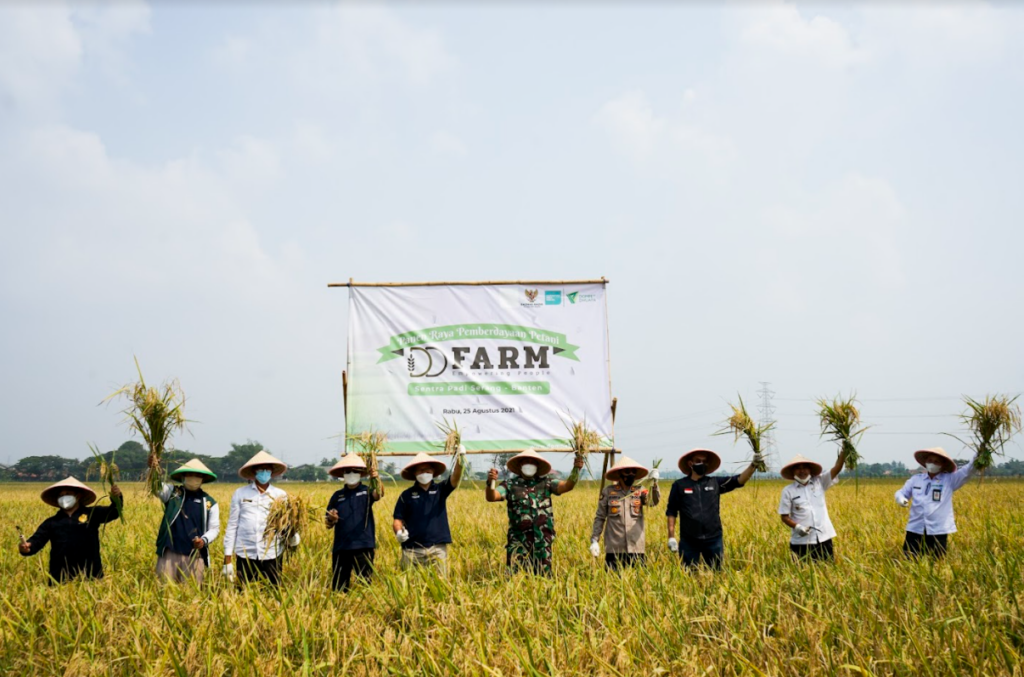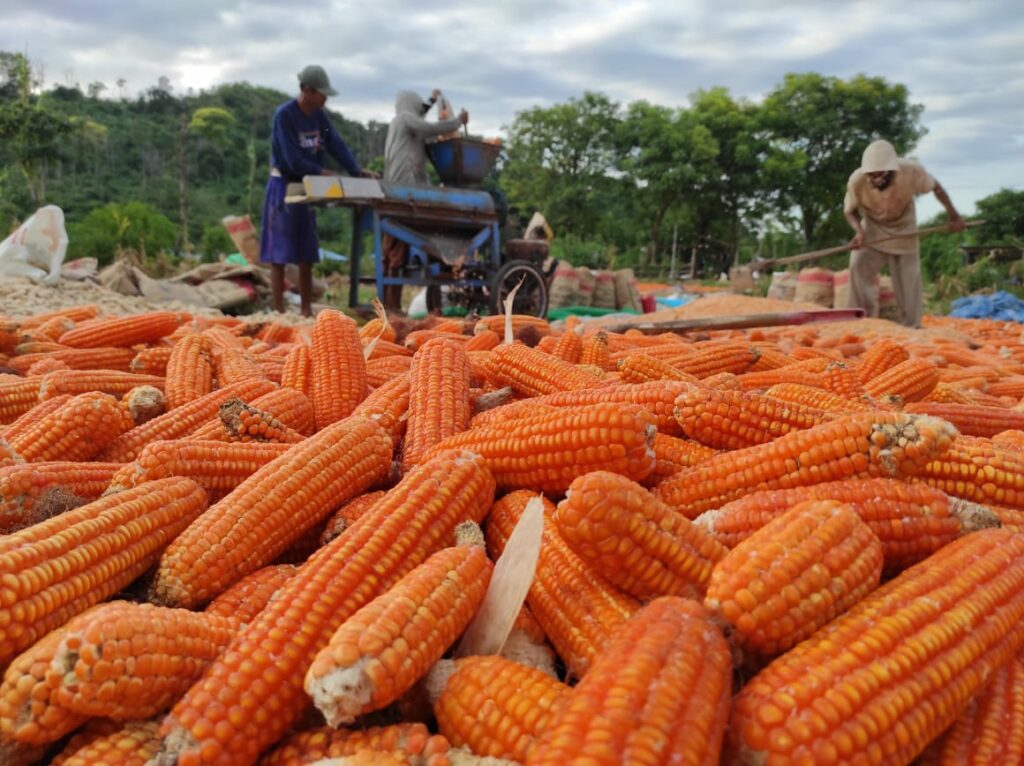Besides rice, corn is also one of the staple food choices for Indonesia. Corn is also one of the main commodities of Indonesian agriculture as an important food source of carbohydrates to replace rice. By 2022, corn farmland has reached more than 5 million hectares, half of the area of rice farmland. Thus, most people working as farmers in Indonesia are corn farmers.
Corn agricultural products must be issued zakat as a staple food when it reaches nisab. So, how much is the nisab zakat of agricultural products and how to calculate it? Check out the following review.
Zakat Corn Farming
Agricultural zakat belongs to one of the types of zakat malls. The object of agricultural zakat is not only the crops that produce staple food, but also the crops of plants or other economically valuable crops, such as grains, vegetables, tubers, fruits, ornamental plants, etc. The following is the legal basis for zakat agricultural products as stated in the Quran surah Al-An’am:
“And He was who made the gardens of the flattering and the non-flattering, the date palms, the plants of which the various fruits, olives, and pomegranates were similar (in shape and color) and not the same (in taste). Eat of his fruit (which is various) when he bears fruit, and cash out his right on the day of reaping the fruit (by being given to the poor); and do not overdo it. Indeed, God does not like excessive people.” (QS. Al-An’am verse 141)
Also Read: Berapa Nisab Zakat Perdagangan? Ini Cara Menghitungnya

Nisab Zakat Corn Farming
Different from zakat mal, nisab or the minimum amount of agricultural zakat is 5 wasaq or about 653 kilograms. If the yield has not reached this amount, corn farmers are not obliged to issue zakat. In addition, the nisab of agricultural zakat that needs to be issued also depends on the source of irrigation used in working on the agricultural land. The source of irrigation is divided into two, namely water of natural origin and water whose flow is specially made.
Water from Nature
Agriculture uses water from nature, namely rainwater, river water, and springs as a source of irrigation. If the rice fields managed are rainfed rice fields and other types of irrigation that do not need to buy water, then the value of agricultural corn zakat that must be issued is 10% of the entire crop.
Artificial Water
Artificial water here means irrigation water purchased to irrigate the fields so that they can grow. For this type of corn farming, the amount of zakat that must be issued is 5% of the entire crop. The remaining 5% is assumed to be the cost of purchasing fertilizers, land treatment, pest drugs, etc.
Mixed Water
The development of technology and weather changes at this time make us rarely find rice fields that are rainfed or irrigated. So, what if the rice fields are managed in two ways of irrigation, namely rainwater and irrigation water? If we refer to the opinion of Imam Az-Zarkawi, then the amount of zakat of this type of paddy agricultural product is 7.5%. This magnitude of 7.5 is the middle value of 5% and 10%.
Corn Farming Zakat Period
Issuing agricultural zakat does not have to wait for a haul or a period of one year of ownership. Instead, corn farming zakat is issued every time the harvest period arrives. However, some people prefer making a mall during Ramadan and issuing zakat fitrah. This is not a problem as long as it is still within a year of harvest and the next harvest period has not come. Because if it has passed the next year, it is feared that the farmer will forget to fulfil his corn farming zakat.
Also Read: Tunaikan Zakat di LAZ Bisa Kurangi Kewajiban Bayar Pajak, Bagaimana Caranya?

Corn Farming Zakat Requirements
There are conditions that corn farmers must meet before they issue corn farming zakat. These conditions include:
- Land and agricultural products are owned. The person who has the right to issue agricultural zakat is the owner of the rice field, not the labourer who works the rice field.
- Agricultural output has reached nisab. Agricultural zakat nisab is a minimum of 653 kg. If the agricultural product is in the form of fruit such as corn, then the entire wealth of agricultural products is converted to the value of the agricultural products of the staple food of the local community.
Could Operational Costs Cut the Value of Zakat?
Regarding operational costs, two questions need to be answered. Do operating costs reduce zakat obligations, and can operational debt reduce zakat obligations?
In this case there was a polemic among the scholars. Because, there are no nas (religious text from the Quran or hadith) that straightforwardly explains the problem. Therefore, contemporary scholars delve into the opinions of classical friends and jurists.
Operating costs and debt do not reduce zakat obligations. For example, if the harvest value by irrigation from rivers or rainwater reaches Rp100 million, then the zakat is 10%, which is worth Rp10 million. Or, if the water uses a fee, then the zakat becomes 5%, which is worth IDR 5 million.
This opinion comes from the Shafi’iyyah, Zahiriyyah, Malikiyyah, Ahmad (in one account), Hanafiyyah, al-Auza’i, and Abdurrahman as-Sa’di scholars. They had an argument from the Prophet Saw who sent some friends to take zakat from the agricultural products of the Muslims at that time. When withdrawing zakat, the officers did not ask about the debt or operational costs incurred by the farmers.
Zakat obligations reduce operational costs and debts for basic agricultural and plantation needs. This opinion follows the views of ‘Ata, Hasan, and An-Nakha’i. According to the above two opinions, the first opinion is strong. Because the additional costs in that case serve to increase agricultural or plantation income. Wallahu’alam..
Agricultural Zakat in Dompet Dhuafa
Friends can channel agricultural zakat through Dompet Dhuafa. It can be done by handing over directly or distributing through the online donation platform on the donasi.dompetdhuafa.org page. Through Dompet Dhuafa, the zakat you give will be distributed to the duafa people in various forms, one of which is the empowerment of the people through five pillars of the field, namely education, health, social, economic, and cultural.



